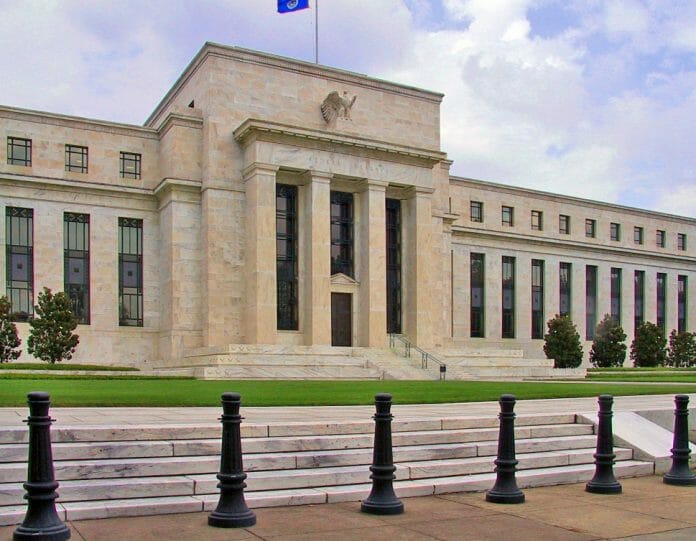US rate cuts are coming – that’s the memo from the markets, even as Fed Chair Powell stuck to his message of remaining focussed on curbing inflation despite the banking sector turmoil. Markets are now expecting more than 75bps of rate cuts by the end of the year versus the Fed’s latest projection (and Powell’s statement) foreseeing no cuts.
In his editorial, Standard Chartered’s Rajat Bhattacharya said he sided more closely with the markets, especially after the recent stresses among small US banks which are likely to tighten bank lending conditions further, even though the liquidity crunch appears to have dissipated for now. He added the US recession indicators, except for two market-based ones (equities and credit spreads), point towards an increased risk of a recession this year. That suggests both equities and HY bonds are under-pricing risks.
The message from the Fed this week, as it raised its benchmark rate to a 15-year high of 5.0%, was clear: while the two recent bank failures have tightened financial conditions, the central bank remains focussed on bringing inflation, still running above 5%, back down towards its 2% target. As a result, Fed policymakers are prepared to tighten some more, ending the year with a policy rate of 5.0-5.25%, so that US GDP growth slows to well below the 1.8% long-term trend. The growth slowdown is seen to lift the jobless rate almost 1 percentage points (ppt) to 4.6% by the end of 2024, slightly above the 4% mark that the Fed considers as the long-run optimal jobless rate required to keep inflation in check. Despite these, it expects inflation to fall back closer to its 2% target only by 2025.
The Fed’s benign soft-landing scenario challenges the lessons from the past 60 years, which suggests that when the unemployment rate rises, it usually shoots up at least 2ppt. The median recession since the 1960s, excluding the COVID recession of 2020, resulted in a 3ppt increase in the jobless rate and 1.8ppt decline in GDP, with the recession lasting an average of 10 months. Regardless of the nature of a recession, a downturn seems more imminent than even a month ago. Our quant model is indicating 90% chance of a recession in the next 6 months, with our more subjective view not far behind at 80% in the next 12 months. As a result, the US bond yield curve has steepened (2-year yield has fallen more sharply than 10-year yield) as investors price in rate cuts. Other signals include some early job market indicators, such as the first y/y fall in the hiring of temporary workers and y/y rise in jobless claims in this cycle. A segment of the US yield curve that Powell believes is the best indicator of a coming recession (spread between 3m T-bill yield in 18 months and the current 3m T-bill yield) has fallen to a new record low (below the levels at the onset of 2000 and 2008 recessions). Meanwhile, US money supply is contracting y/y for the first time in history as banks tightened lending conditions significantly even before the current turmoil hit the small banks.
To be sure, US and European authorities have taken forceful measures in recent weeks to reassure bank depositors that their savings are safe. As a result, money market measures of liquidity stress have eased significantly this week. US Treasury Secretary Yellen’s comments suggested that authorities are open to the idea of temporarily guaranteeing all bank deposits at stressed lenders, if not the entire US banking system. Such reassurances and the latest liquidity boost could still lift risk assets in the very near term. However, the challenging 6-12-month outlook argues for investors to fade any such rally.
By Standard Chartered’s Rajat Bhattacharya









